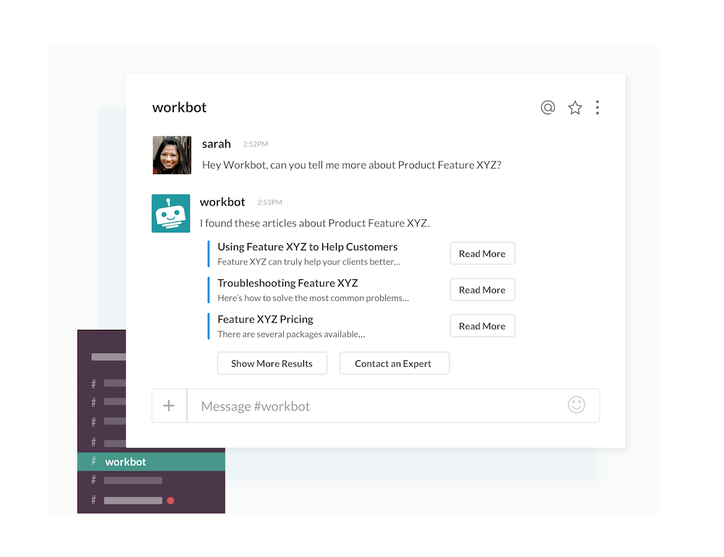Adopting machine learning (ML) has become a make-it-or-break-it scenario for today’s tech companies. According to O’Reilly Media, the state of machine learning stands with 51% of organizations considering themselves users of some sort and the remaining 49% currently exploring its benefits. From its ability to garner insights via product development to improving operations, ML is becoming the difference between business agility and potential failure.
AI, the parent of ML, has experienced a boom in recent years, due to a growth in computing power and sophistication in algorithms. ML, the subset of AI which provides algorithms that automate knowledge engineering, has reaped its benefits, being adopted at rapid speeds alongside its predecessor. Between 2016 and 2017, enterprise investment in AI and ML jumped 50% from $26 billion to $39 billion, according to McKinsey.
“Machine learning will impact the way businesses work because of its ability to quickly analyze massive amounts of data, automate processes, and boost productivity,” said Gautham Viswanathan, Founder and Head of Products at Workato. “We see our customers benefit from Machine Learning everyday through our Recipe IQ feature, which uses algorithms based on billions of integration events and thousands of use cases to deliver intelligent workflows like digital customer journeys.”

“Paired with Workato DNA, which allows customers to intuitively build integration recipes and automate operations while ensuring instant deployment, auto-scaling, security, and governance—Recipe IQ puts more users of an organization in control of driving the digital transformation in unprecedented ways.”
Outside of tech, McKinsey reports, adoption of AI and ML as integral to business has been slow, with many companies questioning ROI. However, with its ability to predict demand and insights, use cases for ML are on the rise in departments like sales, HR and customer support. To stay afloat, Gautham believes, companies across sectors should invest in these technologies now.
So, for those who may be contemplating using ML to intelligently acquire customers via the sales funnel, provide top-tier customer support, or garner insights from business forecasting, how can they get started with ML?
Related: How to get the most out of product intelligence
1. Determine where you fit in
If you have an idea for leveraging data at your company and don’t know where to start, try implementing ML across your business, including in departments like marketing and HR. Opportunities may arise within the test run for the best use case. You may even conclude that data scientists, or tech professionals implementing ML in your business, may be best suited in departments or particular teams for the long term.
One of our customers leveraged Machine Learning to create a bot-driven knowledge base inside of popular chat app Slack. Tenable, a leader in Cyber Exposure solutions, was looking for a way to streamline how employees accessed information about the product. Non-technical employees often asked the same questions to Subject Matter Experts (SMEs) despite the information being stored in their CRM and SDL knowledge bases. Upon review, Bill Olson, a member of the Product Management team, realized the answers to most of the questions were already stored in their knowledge bases and needed a system where employees could go in and submit inquiries and quickly be presented with an answer.
“When we analyzed all of [our employees’ requests for help], 90% of them had an answer already written down,” he says. “So rather than having humans point people to the right answer, [we needed a system where] you could go in and ask a question, and it would give you the answer.”

Now, when an employee asks a question in Slack, Workbot for Slack fetches three of the most relevant results and presents them to the employee. If the articles aren’t exactly what they’re looking for, the employee can select a button that asks the bot to try again. If the employee still needs additional help, they can select the “Ask the Expert” button, which opens a separate Slack channel connecting them with a SME who can answer their question. The bot uses ML to continually improve based on the queries and feedback it receives.
With this workflow, employees get answers right away in a system they already use frequently, Slack, rather than having to wait for help. This, in turn, increases productivity for both the product team and departments such as sales.
Learn more: 3 reasons to adopt bots into your business workflow >
2. Get started, and treat your data like currency
Of course, it would be nice to have a plan of what the adoption process will look like or a finished ML product, but at the risk of falling behind, it’s best to get started with what you have. Identify your strengths, seek out small areas of opportunity and prepare to launch. Centralizing ML across your business will help you determine which AI technologies to use, as well as if business-wide application is still worth investing in (past the trial).
As your data fuels these efforts, you’ll want to treat it like currency; to optimize and improve processes, your data must be managed and protected. If it somehow gets lost or corrupted, the structure of these systems (and potentially your operations) could falter. It’s always best to have a backup to your backup to your backup.
On top of protecting this pivotal resource, your data should be cleaned and standardized, according to Forbes. If your data is pulled from various sources and hasn’t been organized in some way, it’ll be very hard to glean any value from an analytical exercise.
Think of it as spring cleaning—or GIGO (garbage in, garbage out). If you want to keep your systems organized, you have to get rid of the trash first.
3. Have a business systems playbook for new hires
When hiring talent, not everyone is going to be an expert in the field or know exactly how your processes work (every company is different). Have your data science team work with the business systems team to build a curriculum that explains what technologies you use, why they’re implemented, use cases as well as customer scenarios (typical pain points and solutions). Coming into your systems blind won’t improve efficiency, especially if time is of the essence and your competitors are already doing it faster.
Pair new hires with experienced “buddies” on your team, or require onsite training courses prior to promotions or managing projects. At the very least, ensure all potential hires are fluent in probability and statistics, as data science requires a deep knowledge in the field in order to problem solve and implement applications.
4. Don’t try to over-automate
Yes, it’s true that based on the surging rise in tech skills, at least 50% of today’s jobs are susceptible to current capabilities in AI, but that does not mean human input is obsolete. Digitizing all human interaction may cause more harm than good.
For example, building an algorithm that determines if a patient is due for an annual physical is great. Building an algorithm that replaces your PCP with a questionnaire or series of interactive tests, however, may not be well-received. Some patients appreciate the one-on-one time with their doctor, allowing them to closely review any concerns and set up fundamental testing if needed. If the patient feels like they can’t clearly communicate with their doctor, that could prohibit them from receiving necessary care down the road, which could cause further problems.
5. Educate C-suite about AI
Sure, your IT team may know about advancements in AI. Other staffers may know about them too, but to fully integrate ML (business-wide or not), the entire team has to be onboard, including the CEO. ML ultimately changes your way of working, which requires a significant investment. Even if your boss is not knee deep in the knowledge of how these systems work, they’ll likely have input on how it affects their bottom line.
Making C-suite aware of what’s going on is imperative to any digital-first strategy moving forward, especially if it has the potential to disrupt markets or remake any existing business models in your company or industry.
Adopting ML is not a decision you can make lightly – there’s resources that have to be acquired, use cases to be identified, and alignment and approvals needed from stakeholders and C-suite alike. But, if the right strategy is applied, businesses who adopt ML stand to reap tangible, transformative benefits that will help them stay competitive in today’s market.
